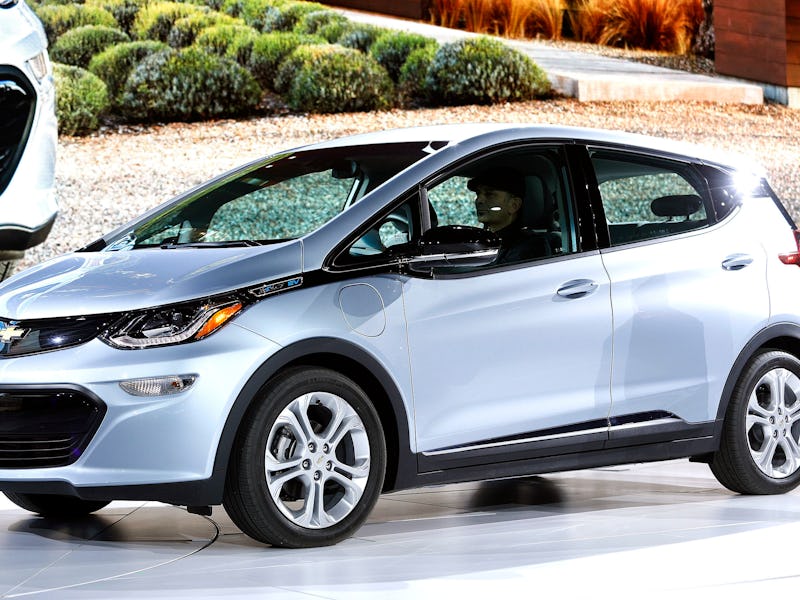Solid Glass Electrolytes Could Save Electric Car Batteries

The car of the year at the 2017 Detroit Auto Show wasn’t a gas-guzzler. It was the Chevrolet Bolt, a vehicle powered by an electric battery. But that doesn’t mean the war’s been won. Batteries are still imperfect things.
They are temperamental, volatile, and slow to recharge, but all of that could soon change: A team of engineers led by John Goodenough, the co-inventor of the first lithium-ion battery, might have discovered a way to make solid-state batteries that charge quickly, perform in extreme temperatures, and don’t have a tendency to blow up.
The secret to the team’s research is moving away from the usual liquid-filled lithium-ion batteries. Instead, Goodenough and senior research fellow Maria Helena Braga use solid glass electrolytes — chemical structures that allow an electric current to pass between a positive to a negative electrode, releasing energy to a device — rather than ones suspended in a liquid. The result, he said, is a battery that’s pretty much better in every way.
“Cost, safety, energy density, rates of charge and discharge and cycle life are critical for battery-driven cars to be more widely adopted. We believe our discovery solves many of the problems that are inherent in today’s batteries,” the 94-year-old Goodenough told the University of Texas.
This is huge news for any device that uses a lithium-ion battery, but the problems of liquid-state storage cells have been writ large in electric cars. Range anxiety, or the fear that an electric car is going to crap out on you like your cell phone in the middle of an important text conversation, is a major barrier for many prospective electric car owners.
Part of the problem is charging time — while the best electric cars can get you just as far on a charge as a traditional vehicle can on a tank of gas, charging them up again is slow. Goodenough and Braga’s solid-state batteries have a much higher energy density, which means they can both hold more energy and propel cars further, and charge up faster. One of the biggest limitations of lithium-ion batteries is that they can short circuit and catch on fire if too much electricity passes through them at once (it creates tiny “metal whiskers” called dendrites that creep through the liquid and short the thing out).
The most recent big example was the exploding Samsung Galaxy Note 7. Solid state batteries don’t have this problem, which means they can be charged much faster, in minutes rather than hours according to Goodenough and Braga’s research.
The other big advantage is that the solid state batteries are far more efficient in cold weather. Both electric and gasoline engines are less efficient in the cold, but temperatures below -20 degree Celsius are particularly hard on prior versions of a solid-electrode battery. Electric cars still work, as Lucid Motor’s video below shows, but their batteries will run flat much faster.
Pretty much every major battery manufacturer, several federal agencies, and multiple universities are looking for a better system for storing energy, especially as it’s integral to harnessing renewable sources like solar and wind power. Goodenough and Braga are “working on several patents” for their research, and hope to start testing it in cars and other devices soon.